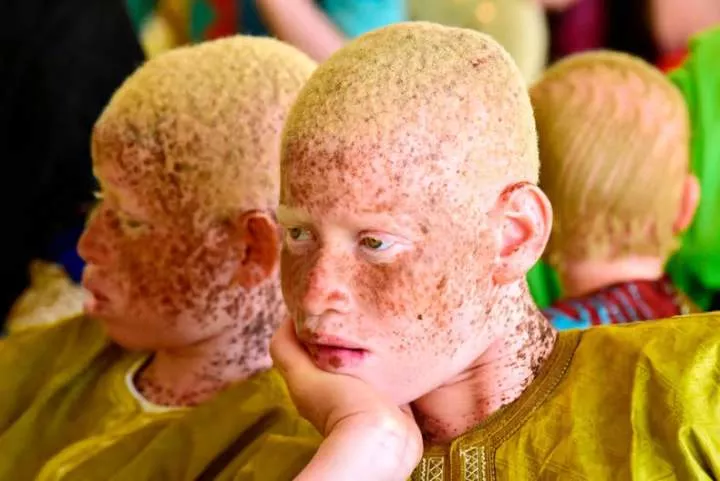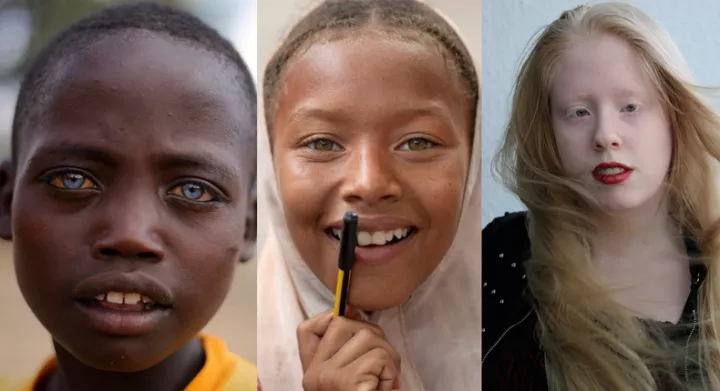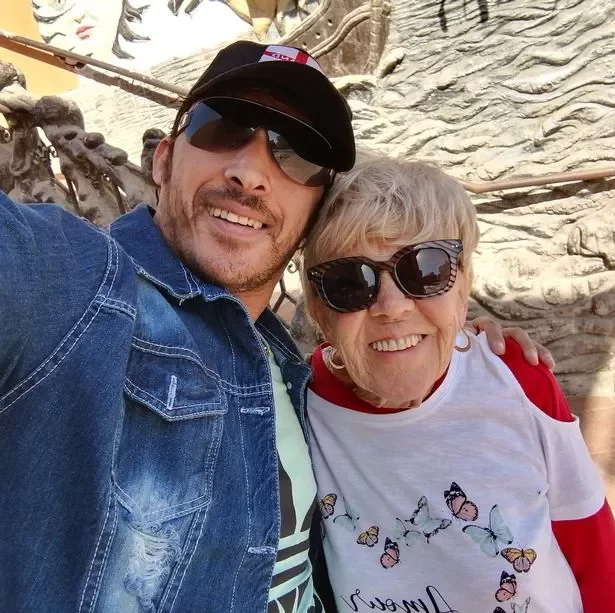![American albino model Shaun Ross [Getty Images] American albino model Shaun Ross [Getty Images]](https://static.netnaija.com/i/VpagqjnQKwO.webp)
Albinism is a genetic condition characterised by a lack of melanin, the pigment responsible for the colour of skin, hair, and eyes.
Despite scientific understanding of the condition, people living with albinism often face significant challenges due to widespread myths and misconceptions.
These myths are deeply rooted in cultural and traditional beliefs across various societies, perpetuating stigma and discrimination. This essay explores common myths about albinism, their cultural origins, and the impact they have on the lives of those affected.
1. Albinism is a curse or punishment
In many cultures, albinism is erroneously perceived as a curse or a divine punishment. This belief is prevalent in parts of Africa, where individuals with albinism are often stigmatised and ostracised. In some communities, people believe that the birth of a child with albinism signifies an ancestral displeasure or a supernatural curse on the family. Such beliefs lead to social exclusion and discrimination, causing significant psychological and emotional harm to those affected.

In Tanzania, the belief that albinism is a curse has led to severe social ostracism and even violence against people with the condition. Families with children who have albinism are often shunned, and the children may be hidden away from society out of shame or fear.
2. People with albinism have magical powers
One of the most dangerous myths is the belief that people with albinism possess magical powers. In certain regions of Africa, particularly in Tanzania and Malawi, body parts of individuals with albinism are believed to bring good luck, wealth, or health. This superstition has led to horrific acts of violence, including mutilations and murders, to obtain these body parts for use in witchcraft rituals.
In East Africa, witch doctors promote the belief that the bones, skin, or hair of individuals with albinism can be used in potions to attract wealth or success. This has resulted in numerous attacks and even killings of people with albinism, turning them into targets for human trafficking and exploitation.
3. Albinism is contagious
In various cultures, there is a misconception that albinism is a contagious disease. This myth leads to social avoidance and discrimination, as people mistakenly believe they can contract albinism through physical contact or proximity. Such misunderstandings contribute to the isolation of individuals with albinism and prevent them from fully participating in community life.
In some rural areas of Africa and Asia, the fear of contagion causes people to avoid contact with individuals with albinism, excluding them from social, educational, and economic opportunities. This isolation exacerbates the challenges they face and limits their ability to integrate into society.
4. People with albinism have red eyes
A common myth in Western and other global cultures is that all people with albinism have red eyes. This belief likely arises from the visibility
of blood vessels in the eyes due to the lack of pigment. While it's true that people with albinism can have light-sensitive eyes that sometimes appear red in certain lighting, the majority have blue, grey, or light brown eyes. This myth, though less harmful than others, still perpetuates misunderstandings about the condition.
In Western media, the portrayal of individuals with albinism often includes exaggerated features such as red eyes, which reinforces the myth and shapes public perception inaccurately.
5. Albinism is always accompanied by intellectual disability
In many parts of the world, there is a false belief that albinism is linked to intellectual disability. This misconception arises from the association of physical appearance with cognitive abilities, leading to the assumption that visible differences equate to mental impairments. This myth results in lowered expectations and limited opportunities for people with albinism, affecting their education and employment prospects.
In educational settings in various countries, children with albinism may be unfairly treated as if they have intellectual disabilities, leading to inappropriate educational placements and a lack of necessary academic support tailored to their actual needs, primarily visual accommodations.
6. People with albinism cannot go outside
Another widespread myth is that individuals with albinism must avoid the sun entirely due to their sensitivity to UV rays. While it is true that people with albinism need to take extra precautions to protect their skin and eyes from sun damage, this does not mean they cannot enjoy outdoor activities. Proper sun protection, such as sunscreen, protective clothing, hats, and sunglasses, can allow them to safely spend time outdoors.
In both urban and rural settings globally, this myth can lead to overprotective behaviour from family members, limiting the social interactions and physical activities of individuals with albinism, which can negatively impact their social development and quality of life.
7. Albinism only affects skin colour
Many people mistakenly believe that albinism only impacts skin pigmentation. In reality, albinism affects the skin, hair, and eyes, leading to a range of visual impairments. The lack of melanin in the eyes can cause issues such as nystagmus (involuntary eye movement), photophobia (sensitivity to light), and reduced visual acuity.
In schools worldwide, educators may not recognise the visual challenges faced by students with albinism, failing to provide necessary accommodations such as seating arrangements that account for their visual needs or access to large-print materials, thus hindering their academic progress.
Conclusion
Dispelling the myths surrounding albinism is crucial for fostering a more inclusive and understanding society. These myths, deeply rooted in cultural and traditional beliefs, significantly impact the lives of people with albinism, leading to discrimination, social isolation, and even violence. By educating communities and promoting awareness about the realities of albinism, we can challenge these misconceptions and support the rights and dignity of individuals living with this condition.
Actions for change
Education and awareness campaigns: Schools, community centres, and media should prioritise education about albinism to dispel myths and promote understanding.
Supportive policies: Governments and organisations should implement policies that protect the rights of people with albinism and provide necessary accommodations.
Advocacy and representation: Increased representation of people with albinism in media, politics, and public life can help challenge stereotypes and inspire positive change.
By addressing these myths and fostering a culture of inclusivity, we can help ensure that individuals with albinism are treated with the respect and dignity they deserve.

















Comments